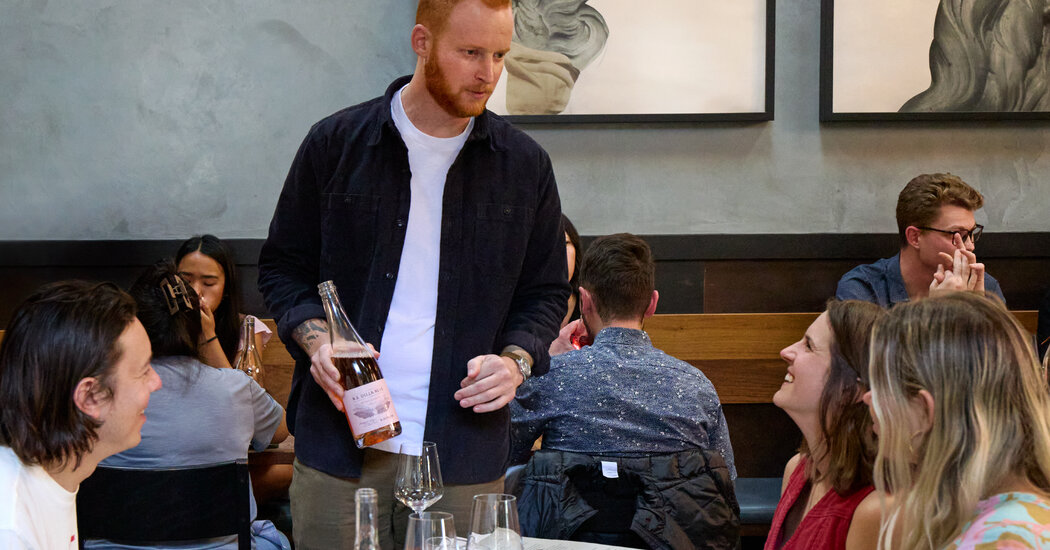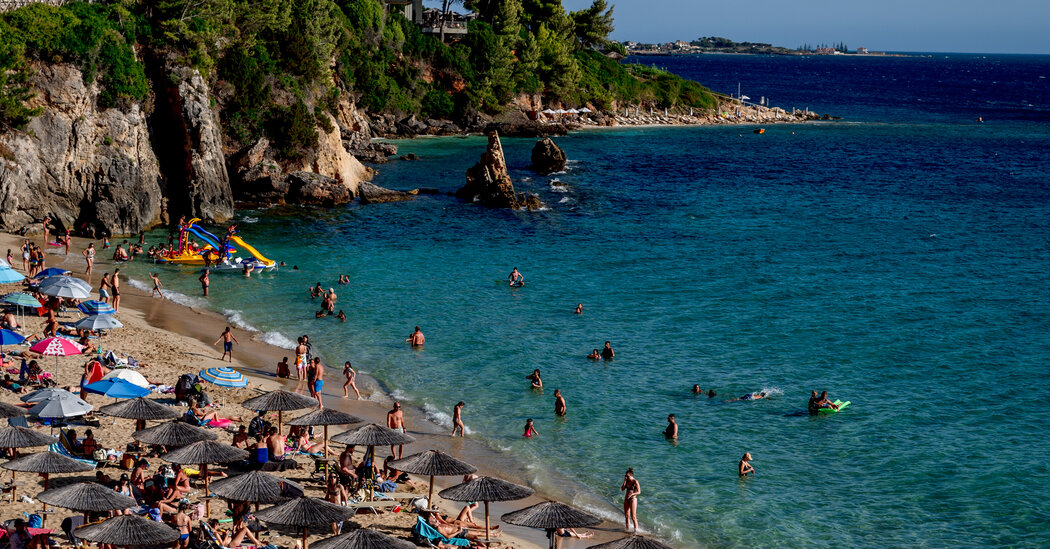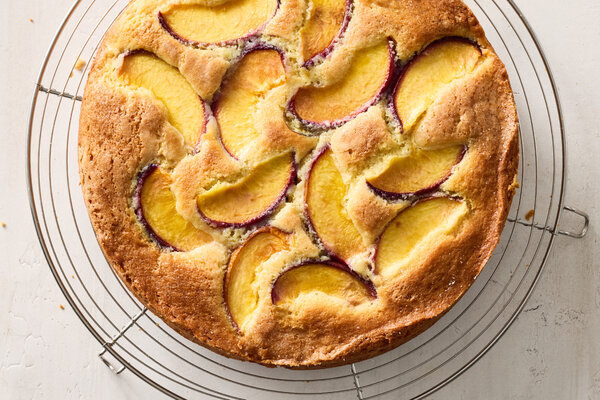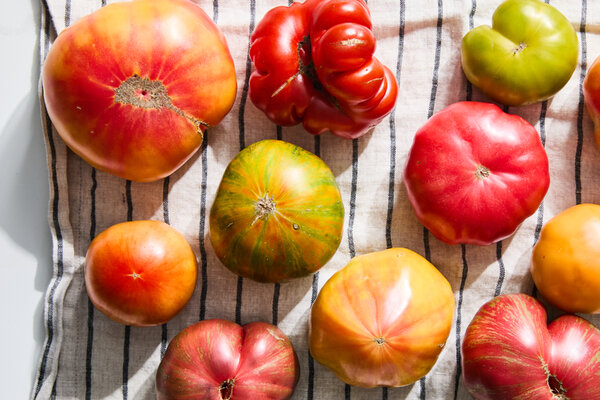The typical restaurant wine-by-the-glass selection is overpriced and predictable. Many people can recite it by memory.
There’s a glass of Champagne at $30, with a cheaper sparkler like Prosecco at $17. Then a pinot grigio, a sauvignon blanc and a chardonnay, for, say, $17 to $25. A rosé if the weather’s warm, and reds, maybe a malbec, a pinot noir and a cabernet sauvignon, all in that same price range, all from nondescript, widely available producers. If the restaurant is cultivating a youthful clientele, add in an orange wine and a chilled red.
With variations depending on local tastes and a restaurant’s cuisine, this is by-the-glass standard issue. It’s a bore, it’s a shame and it’s a colossal missed opportunity, now more than ever.
At a time when wine consumption is falling worldwide and the wine community worries that millennials and Gen Z will never consume as much as their parents did, wines by the glass ought to be a big, generous embrace to young people. The selection should provide a warm welcome, demonstrating the beauty and wonder to be found in a good glass of wine.
A great selection of wines by the glass is in the long-term interests of the teetering restaurant and wine industries. It ought to be a restaurant’s calling card, a way to broadcast its approach to wine while conveying a restaurant’s personality and vibe. Instead, it’s too often an emphatic turnoff, encouraging people to make the rational decision to order cocktails or craft beers rather than expensive mediocrities.
For a wine industry trying to build a following, it would seem smart to offer good bottles at prices low enough to make it easier for restaurants to also serve these wines by the glass. If it’s economically feasible, wineries might even consider a loss-leader strategy in which good wines are sold by the glass at a loss to attract new customers who will perhaps buy other, more profitable bottles.
Too many restaurants take the short-term approach. They use wines-by-the-glass as a cash cow, often to keep costs down in other areas like food.
As disheartening as the standard wine-by-the-glass lists can be, exceptional restaurants around the country are demonstrating how it ought to be done. They are putting together excellent selections of wines by the glass at reasonable prices, lists that are attracting business.
Terre, a trattoria in Park Slope, Brooklyn, is perhaps an extreme example. Every single one of its 100-bottle selection is available by the glass, with at least half in the $15 to $19 range. All the wines, many from unfamiliar Italian regions, are carefully chosen by Alessandro Trezza, the owner and sommelier, who says he is looking for wines only from environmentally minded farmers.
Such a list depends on building trust with customers. Mr. Trezza said most of his guests, who include a high percentage of returning customers, don’t look at the wine list but ask for recommendations. They are presented with three or four options, offered tastes and pick what they like.
“Ninety percent of the guests at Terre drink by the glass,” Mr. Trezza said.
What about first-time visitors?
“We explain the concept, and we spend time with them,” he said. “Usually, they will be intimidated and ask for classic wines. So, we bring them a Chianti but also other bottles to try.”
As a young sommelier, Mr. Trezza said, he was always looking to try different wines. That desire was the germ of his by-the-glass-list, a system he employs at all four of his restaurants, including Have & Meyer in Williamsburg, Be Pasta in Park Slope and Spes in the East Village.
“It was the key to our restaurants,” he said. “It’s the reason we are truly successful.”
In San Francisco, Penny Roma, also a trattoria, offers a more conventional by-the-glass list that is nonetheless superb. The restaurant, part of the Flour + Water restaurant group, lists roughly 15 selections, all $19 at most, that adhere to a formula intended to present something attractive to both the hesitant (like a chardonnay from Beaujolais or a San Luis Obispo pinot noir) and the adventurous (a teroldego from northern Italy or a Hungarian harslevelu).
“Sometimes they want a safe bet, something familiar,” said Sam Bogue, the restaurant group’s beverage director. “If they are curious about the more eccentric glasses, we can engage them in conversation.”
Selling such esoteric wines requires rigorously educating the staff, Mr. Bogue said, so they can respond to guests who want to discuss them.
“Young people seem a little more able to enjoy some of the more eccentric wines on the list and are more willing to have conversations with the staff,” he said.
Wine bars almost by definition must have exceptional by-the-glass lists. It’s certainly true of renowned places like Terroir in Tribeca and Corkbuzz in Union Square and Chelsea. Wine bars have the built-in advantage — theoretically, at least — of employing people passionately devoted to wine.
For restaurants, that is often not the case, especially after the pandemic when the number of restaurants employing a dedicated wine professional has dwindled.
Nowadays, stressed out managers are adding wine to their other responsibilities and often don’t have the bandwidth to put in the necessary, constant effort to ferret out great bottles at attractive prices. The solution is often to go with big-name, mainstream brands that are always available and require little explanation to customers. Hence, the dreary by-the-glass lists.
“Wine directors have never been spread so thin,” said Matthew Conway, a longtime sommelier in New York who now owns the Tippling House, a wine bar in Charleston, S.C. “If you go with big brands with a steady supply, it’s one less thing you have to worry about. It all comes down to access to high-quality wine help.”
At Tippling House, Mr. Conway always has a dozen interesting by-the-glass selections on hand, like a Saumur chenin blanc from Arnaud Lambert for $16, or a Russian River Valley trousseau gris from Pax for $19. He also tries to come up with creative ways of engaging customers, like a weekly Instagram contest to pick a desirable wine, sometimes expensive, sometimes rare, to serve on Fridays by the glass for $19.
“It gets them in the door and gets them talking about wines they wouldn’t have access to,” he said. “We either make a little money on it or break even, but now we have people who are regulars on Friday.”
The industry standard for pricing wines by the glass has roughly been for one glass to pay the wholesale price of a bottle. That is, a bottle with a wholesale price of $20 would be sold at $20 a glass. But as costs for wine and other restaurant necessities have risen, it’s been difficult to serve good wines at reasonable prices.
“I wish there were more options at $15 a bottle, but that category’s been drying up,” Mr. Conway said. “It’s gotten where a $24 bottle, I charge $19 a glass. I eat into my own margins so I can be proud of what I’m serving.”
Paul Calvert, a partner and beverage manager at Ticonderoga Club, an eclectic American tavern in Atlanta, agrees with Mr. Conway.
“You can’t really get good by-the-glass wine anymore and keep the prices down,” he said. “I have to eat into the margins to sell wines we can stand behind.”
Ticonderoga’s list is small but mighty, 10 constantly changing selections for $13 to $19 that pair well with its assertively flavored food. Mr. Calvert almost always includes a dry sherry and often rarities, like a Cour-Cheverny from Philippe Tessier for $17.
“We change it all the time, which may be annoying to our staff,” he said. “But we have so many regulars, and we’ve got to change it enough so our guests don’t get bored.”
To make up for the margins he’s losing on the wine, Mr. Calvert said, he’s charging more for cocktails. His logic is that staff labor costs go into constructing cocktails, but not wine.
“I’m making the cocktails buy the wine a little bit,” he said. “But you can’t really do that. They have to also pay for straws and toilet paper and other stuff restaurants give away free.”
These are restaurants that are doing it right. I can point to plenty more, like Vern’s in Charleston, Foreign & Domestic in Austin, Texas, and Leon’s in New York, which sells wines by the quartino, about two glasses.
But too often, restaurants just throw in the towel. As with cities that begin to crumble after foregoing investments in essential infrastructure, stinting on wines by the glass threatens the foundations of good restaurants.
“The purpose of wines by the glass is to offer delicious wines at accessible prices that go well with the culinary purpose of the restaurant,” Mr. Conway said. “If you can’t do that, how can you expect wine to grow and interest the next generation?”
Follow New York Times Cooking on Instagram, Facebook, YouTube, TikTok and Pinterest. Get regular updates from New York Times Cooking, with recipe suggestions, cooking tips and shopping advice.




